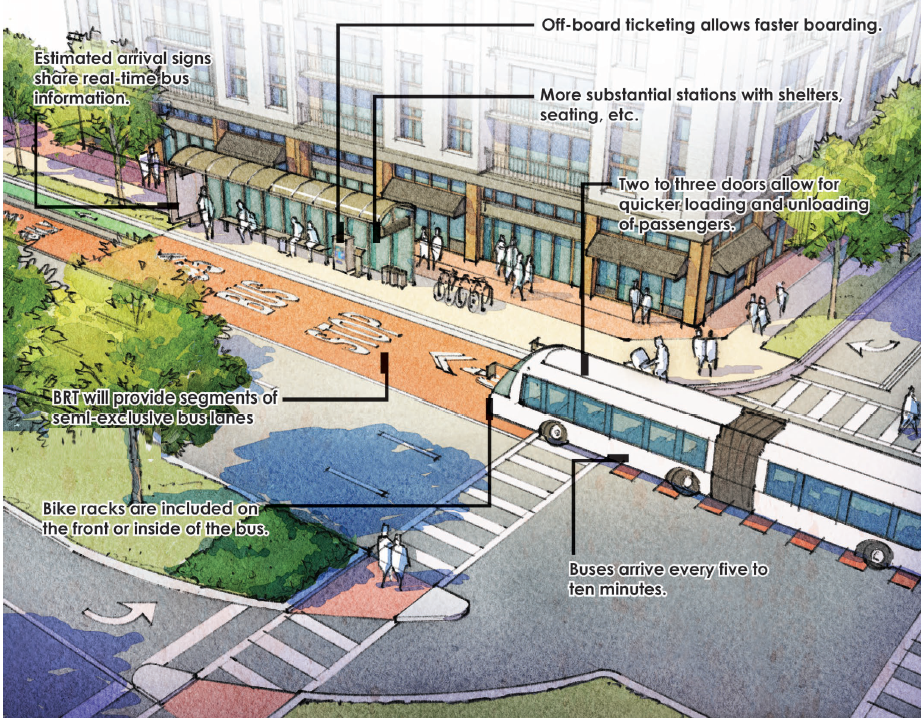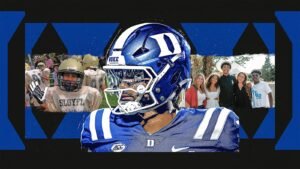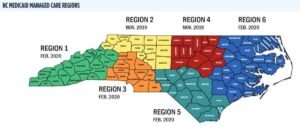Durham is gearing up for a bold leap toward a car-light future. City planners have unveiled early-stage proposals for a Central Durham Bus Rapid Transit (BRT) system—a sleek, efficient “rail-on-rubber” transit with rails-like frequency and dedicated lanes that aims to meet the city’s longstanding transit challenges.
What’s Being Proposed
The envisioned seven-mile BRT route would link major destinations across central Durham, beginning near Duke University Hospital and the VA Medical Center, threading through Ninth Street, Brightleaf Square, downtown Durham Station, and ending at Wellons Village in East Durham . The project is still in predevelopment, with city officials soliciting resident feedback via a survey to inform route planning .
As described by transportation director Sean Egan, the BRT system would provide “rail-like service on rubber tires” with dedicated lanes and frequent buses every 5 to 10 minutes—a model designed to outperform current bus service, where wait times can stretch up to an hour .
The Case for BRT: Cost, Speed, and Access
BRT offers faster, cheaper trips compared to walking 20 minutes from East Campus or paying up to $20 round-trip via rideshare . And while GoDurham fares are free through June 2026, parking at Duke costs $2.25 per hour, making BRT a competitive alternative .
City officials also see equity benefits: nearly 72% of public transit users in Durham earn less than $25,000 a year, highlighting how improved transit can uplift the economically vulnerable .
Regional Momentum (and Lessons from the Past)
Across the Triangle, BRT is gaining momentum. Raleigh is breaking ground on a 5.4-mile BRT, and Chapel Hill plans an 8.2-mile North–South BRT route aiming for 2028 service start; it promises buses every eight minutes during peak times .
Durham is catching up—but the city carries the 2019 legacy of the canceled Durham–Orange Light Rail project, a 17.7-mile line that unraveled after years of planning and $157 million in sunk costs . BRT offers a more scalable, cost-effective transit alternative, though delivering on that promise will require both local investment—and strategic oversight.
What to Watch: Funding, Equity, Relevance
How will the BRT be funded? Officials suggest reliance on local sources, including county transit taxes or partnerships. Federal support remains uncertain . Will this serve all Durhamites equitably? High-ridership areas are central now, but East Durham residents must also benefit from solid, affordable transit. Can trust be rebuilt? After the light rail disappointment, Durham must deliver — even before launching, keeping transparency and community input front and center.
Streets, Sidewalks, and Voter-Endorsed Upgrades
Infrastructure backers can point to promise beyond transit: in November 2024, Durham voters approved a $115 million bond for sidewalks and street resurfacing—alongside $85 million for parks projects, including a water park . These investments, paired with BRT, could reshape how people move—and connect—in the city.
Why Durham Needs This—and Why It Matters
Durham is more than a car-centric city; it’s home to students, seniors, families, and frontline service workers. Reliable transit would enhance access to jobs, education, healthcare, and opportunity.
The Bull City Citizen is tracking this journey—reporting the BRT’s evolution, funding debates, and rider voices. Because shaping Durham’s mobility future isn’t just about routes and buses—it’s about who gets to ride where, and how community investment transforms lives.













